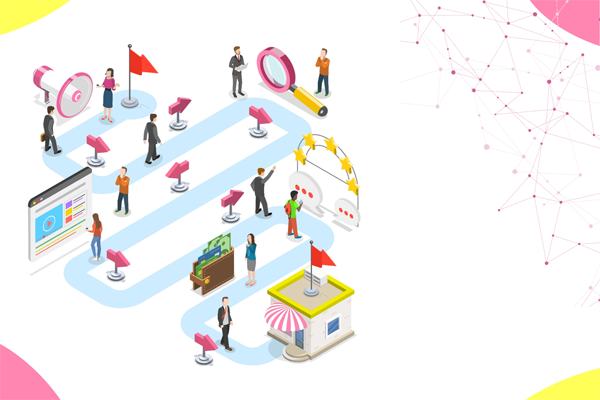Open Banking 101
After struggling to manage the growing issues of unbridled monopolizing of rules and regulations of the banks, the UK Government in 2016 first issued the Open Banking system. It was set up by the Competition and Markets Authority on behalf of the Government to bring more competition and innovation to financial services.
Open banking allows third-parties and fintechs to systematically, securely, and radically change the way they access the financial information of the account holders through their APIs to build new apps and intelligent management services along with greater financial transparency across all their investment and savings platforms.
It culminates the sense of competition amongst the big players in the banking sector, coaxing them to innovate their financial services and make them more customer-centric, disrupting the customers’ financial transaction experiences for the good.
Open Banking and the World
“The UK leads the way in adoption, but international interest in Open Banking is starting to build in the world’s other leading economies.” ~EY: Open Banking Opportunity Index
As the UK pioneered the Open Banking system, the world followed suit with accelerated adoption in both developed and developing countries like the US, Japan, South Korea, India, Australia, and many others. While each country’s framework for the adoption of Open Banking system may differ, it can be typically characterized in two approaches:
- Market-driven approach: Most countries including the U.S. and India, have not been asserting compulsive adoption of Open Banking regimes and instead, are promoting digital innovation and encouraging fintech companies to build unique data-sharing solutions. In fact, India was amongst the first ones to identify the need for Open Banking systems and became an early adopter and promoter of the same. The success of the platform named PayTM, became a fitting example of how India embraced Open Banking and is moving rapidly towards a more collaborative and transparent financial service environment for the service providers and the customers.
- Regulatory approach: On the other hand, a few countries including Hong Kong and Australia have opted for a more structured and regulatory-driven approach for systemized migration from traditional banking to Open Banking.
Open Banking and PSD2: What’s the difference?
Most times Open banking gets confused with the EU’s Payment Services Directive or PSD2. The major difference between Open Banking and PSD2 is the Open Banking system mandates the adoption of the open standard by only nine major banks offering current accounts in the UK, the EU’s PSD2 envelopes all financial third-parties to set-up open APIs defined by the market.
Another major difference is that PSD2 mandates the banks to extend their APIs to third parties, while the Open Banking ensures that the sharing-format stays standardized.
However, the differences do not matter as both the directives are aimed towards a singular goal of transforming traditional banking practices into digital ones, enabling easier, faster, secured, and more transparent control to the account holders over their money. For banks transforming to open banking, PSD2 is only the preliminary stage of evolution. Maveric provides end-to-end PSD2 solutions to banks across the EU and the UK and helps them achieve PSD2 compliance smoothly.
The Voluminous Effect of Open Banking
With 8 out of 10 financial firms willing or planning to adopt Open Banking, a PwC report suggests that, by 2022, the Open Banking sector might quadruple its worth to generate £7.2bn of revenues.
These are just estimated figures with many experts suggesting a greater hike in the numbers as more and more countries explore the potential of this approach to financial services.
How will it benefit the industry, the service providers, and the customers? Let us decipher this by studying the key advantages that Open Banking offers:
Digital Identity and Onboarding
The current KYC and onboarding processes are complex, cumbersome, and time-consuming. Using Open Banking, the customers will be able to create a trusted and permissible digital identity that can be authenticated digitally, eliminating the painstakingly long onboarding process.
This framework could create a trusted adaptable digital identity, where customers authenticate themselves digitally, thus removing a key pain point in the onboarding journey.
From the point of view of the businesses, establishing a trusted digital ID to enable the exchange of data will allow the businesses and financial institutions to create better experiences for the customers. A collaborative approach towards enriched digital identity also reduces the chances of cyber thefts and frauds through collective risk management and more controlled data sharing.
Personal Finance Management
Open banking extends the account holders the ease of control over their finances, empowering them to make more informed decisions to manage their accounts and investments. With the benefit of access to their multiple accounts in one place, they will have a more transparent view for improved comparison between service providers.
Credit Facilities: Loans, Mortgages, Credit Cards
Improved transparency and single platform control facilitate the account holder to make faster credit decisions with the availability of more competitive deals to choose from. The system of Open Banking also aids in getting or refinancing a loan a lot easier as the account holder can just permit the lenders to access their digitally recorded credit history and make a valuable offer to them.
From the financial service providers’ view, they do not have to dig in through a lengthy physical process of credit customer profiling as everything is recorded and accessible online for them to review.
SME Finance
When you are an SMB, you may need to undergo rigorous processes to obtain loans in a traditional banking scenario. Through the Open Banking system, the report submission and accounting books review can be simplified as the lenders can just obtain the necessary and updated data from your banks and online accounting system.
Wealth Management
Open Banking brings enhanced tools to service providers to create new solutions offering their customers with options for better financial decision-making via just-in-time education and guidance for investments and savings. Based on the information acquired through data-sharing, the advisers and wealth managers can offer proactive and better solutions with higher chances of conversion, making it a win-win for both parties.
The Roadblocks in the Way of Implementing Open Banking
Migration from legacy systems: Shifting from legacy systems and traditional practices would require undivided attention and a huge initial investment to build robust structures for Open Banking as their current systems are complex and highly interdependent to serve all their needs and their successful integration into open standards may take a lot of time. The aversion to change and risks associated with data-sharing and security are other reasons why most banking and non-banking financial institutions may be delaying their transformation to Open Banking.
Security and data confidentiality concerns: The biggest hurdle in realizing the potential of Open Banking is the privacy and security of customer and analytics data. There is no doubt that Open Banking empowers the customers by placing greater control over their data in their hands, however, the increasing scenarios of hacking, cybertheft, malware, etc., have put the security of online data in jeopardy. The open APIs will be more susceptible to target by fraudsters or hackers, and so highly robust and secured systems will have to be set-up to meet such challenges and effectively operate in the digital environment.
Rising above the market competition: After successful transformation from legacy systems to Open Banking infrastructure too, one key challenge for the banking and fintech companies is to retain their customers and grow their clientele. With Open Banking offering the customers the benefit to unify and manage all bank accounts or financial experiences from one place, it allows the user to directly compare the offerings, prompting them to make a switch from their current banks. So, it becomes imperative for the banks and the fintech companies, dealing with financial services, to innovate and offer better services and have greater promotional and engagement strategies to keep the customers satisfied.
Future of Open Banking and How It Will Impact Our Lives
Will the customer embrace Open Banking? Well, it all depends on winning their trust. In a recent survey, 9 out of 10 customers indicated a moderate-to-low level of trust in data-sharing, the main component of Open Banking, due to their concerns over privacy, forgery, and cybersecurity.
For Open Banking to strive and thrive in the future, the fintech industry as a whole will need to come up with better solutions to win over customer trust. The country’s regulatory authorities will also play a huge role in establishing the ground rules and standardized frameworks for the financial service providers to deal with. Once the trust is won and the digital ecosystem becomes truly secure, the advantages of Open Banking will shine better and will enable the customers to manage their finances faster and more intelligently, eliminating the need to engage in complex systems attached to traditional banking.
To conclude
If you are an upcoming or an established fintech company looking to embrace the Open Banking system, superlative tech talent is your foremost need to develop a robust digital infrastructure to operate in. At Maveric, we conceive and apply digital solutions for banks in the context of customers, their journeys, and the various experience points across these journeys. Our PSD2 solution makes open banking easy and secure, with some compelling features including banking system integration, strong customer authentication, regulatory reporting, third-party aggregator management, fallback mechanism, and more. Maveric brings an expert and diversified team that offers leading-edge solutions for innovative digital transformation journey to businesses in the financial services domain.
The blog was originally published on MEA Finance
View




